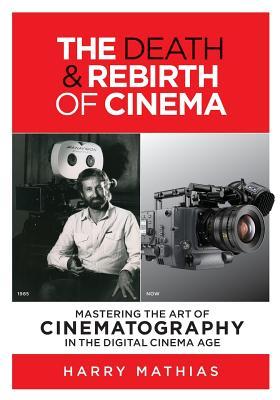The world's cinema has mostly left behind its 100-year tradition of cinematography on film, and begins its search for a new visual foundation. What is next for cinema, is what this book is about. This book discusses the big questions of the future of cinematography, in a cinema that is increasing preoccupied with technology and not with artistic moving images.
"Just as he did with "Electronic Cinematography" 30 years ago, Mathias cuts through the web of misinformation and lays out a brilliant method to gain control over new and constantly changing imaging technologies without losing sight of the valuable lessons cinematographers have taught us for over 100 years. Harry Mathias has the professional experience, technological savvy, and artistic integrity to connect the rich, foundational knowledge of past photographic systems to today's rapidly changing "technology of the month" attitude.
--William McDonald, UCLA Professor & ChairDepartment of Film, Television and Digital Media, said about this book.
This book teaches the vital new cinematography skills that are needed to make great films in a digital cinema world. It covers lighting, lens selection, image control methods, and much more--whether using digital cinema or (photochemical) film with today's technology-driven cinema.
Mathias is a very experienced film cinematographer, one who also is a pioneer of digital cinema cinematography. He outlines concrete plans to take the best path forward to a digital imaging future, without leaving behind the photographic skills and lighting arts of films of the past.
Exploring the path from our past to the future, this book is not only for cinematographers; it is for anyone who cares about telling dramatic stories visually to film audiences. Film directors, producers, production designers, art directors, editors, colorists, and film critics are all concerned with communicating cinematic images effectively to a theatre audience. Often the issue today is not how can this be done effectively with digital cinema, but how can it be done in spite of all this new technology. In this book, Mathias boldly sets out the plan to reach that cinematography of the future.
What is important to cinema is image quality and the art of cinematography--and that is why the major skills required are the same whether a Director of Photography is using film or digital cinema. This book is about making images the right way, regardless of the camera technology being used.
Cinema is, after all, technology in the service of art, not the other way around...
